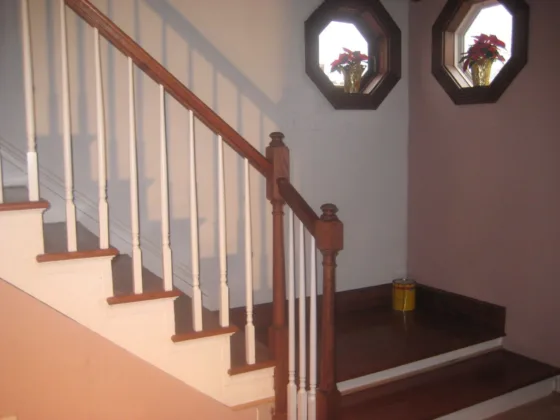Table of Contents Show
The way of work has changed dramatically in the last few years. With the rise of technology and modernization with the increasing popularity of remote work, offices are no longer just the places where we go to sit at a desk and answer emails. They are now the centres for collaboration, creativity, innovation and new ideas.
As a result, the office design for an aspiring workplace has never been more essential. The psychology of office design is the research of how our physical surroundings and atmosphere affect our mental and emotional state. It can have an influential impact on our productivity, creativity, and overall well-being.
A well-designed Office on Rent in Ahmedabad can boost up employees’ work performance by up to 25%. An aspiring workspace can increase the productivity of the employees by:
- Reducing distractions
- Better focus
- Promoting collaboration
- Increasing energy levels
Key Elements of an Office Design for an Aspiring Workplace
Several key elements can help in a productive office environment. These elements include:
- Natural light: Natural light has been found to improve mood, productivity, and sleep.
- Ergonomic Furniture: Ergonomic furniture can aid in preventing fatigue and discomfort, which can lead to less productivity of the employees.
- Noise reduction: Noise can be a big distraction in the offices. Using sound-absorbing materials and creating quiet surroundings can help to reduce noise levels.
- Temperature control: A suitable temperature is important for productivity. The ideal temperature for the office is between 68 and 72 degrees Fahrenheit.
- Greenery: Plants can improve air quality, reduce stress, and boost creativity. The office design for an aspiring workplace is also affected by the greenery.
Top 5 Creative Office Design Ideas for an Aspiring Workplace
1. Optimise Work Space
Far from being static, workplaces should be under continuous review. When reviewing space plans and layouts for your office, you should always prioritise dedicated spaces for focus, collaboration, and rest. It will help you to create a perfect office design for an aspiring workplace.
- Dedicated Focus Areas: These are quiet zones where employees can work without interruptions.
- Collaborative Spaces: Open areas with modular furniture that can be easily reconfigured to suit different group sizes and activities.
- Rest Zones: Comfortable lounges or break rooms where employees can relax and recharge.
2. Natural Light
Natural light is a crucial part of office design for an aspiring workplace and it can be applied through smart space planning. For example, open-plan workrooms welcome natural light.
- Open Plan Layouts: Maximize daylight penetration by minimizing walls and partitions.
- Skylights and Windows: Installing skylights or floor-to-ceiling windows can flood the workspace with natural light.
- Light Reflective Surfaces: Use light-coloured walls and reflective surfaces to enhance the spread of natural light throughout the office.
3. Improve Fresh Air and Ventilation
There are many benefits of fresh air. 20% of the air we inhale is consumed by the brain, so inhaling clean air results in sharper thinking, and focus. Fresh air also promotes office design for an aspiring workplace which can elevate a sense of joy and well-being among employees.
- Ventilation Systems: Invest in high-quality HVAC systems to ensure a consistent supply of fresh air.
- Air Purifiers: Use air purifiers to remove pollutants and allergens from the indoor environment.
- Greenery: Incorporate plants that improve air quality by absorbing toxins and releasing oxygen.
4. No Constant Sitting
Prolonged sitting affects us very badly in the long term. As the trends towards health and workplace wellbeing increase, we may also see crucial changes in the way offices are designed.
- Standing Desks: Provide adjustable standing desks to allow employees to switch between sitting and standing positions.
- Active Workstations: Incorporate treadmill desks or balance ball chairs to encourage movement.
- Breakout Zones: Designate areas where employees can engage in physical activities like stretching or short exercises.
5. Utilisation of Various Colours
Colour is a crucial part of office design for an aspiring workplace that can make a big difference. For example, soft colours promote peace and concentration, and bold colours show collaboration and creativity.
- Soft Colours: Use pastel shades like light blue or green in focus areas to create a calm environment conducive to concentration.
- Bold Colours: Apply vibrant hues like red or yellow in collaborative spaces to stimulate energy and creativity.
- Accent Walls: Create focal points with accent walls painted in contrasting colours to add visual interest without overwhelming the space.
By incorporating these elements into your office design, you’ll create a dynamic environment that caters to various work styles while promoting productivity, well-being, and satisfaction among your team members.
Designs For Different Work Styles: Creating a Better Workplace for Everyone
In the contemporary diverse workforce, it is more essential than ever to create office design for an aspiring workplace. It is important to build corporate office interior designs that accommodate different work styles. By understanding and catering to the importance of individual employees, you can promote a more productive, engaged, and satisfied workforce.
Identifying Work Styles:
There are many different workplace interior design ideas to categorise work styles, but some of the most common include the following:
- Focused workers: These individuals thrive in silence, distraction-free surroundings where they can concentrate on their tasks. The office design for an aspiring workplace is also dependent on the kinds of workers a company has.
- Collaborative workers: These people enjoy working in teams and brainstorming with others. They benefit from open workspaces with a lot of opportunities for interaction.
- Independent workers: These individuals like to work on their own and might not require as much interaction with others. They might appreciate having a private workspace or being able to work remotely.
- Creative workers: These individuals require stimulating surroundings where they can feel inspired and motivated to think outside the box. They might benefit from flexible workspace choices or access to natural light.
Office Design for Aspiring Workplace: Designing for Different Needs
Once you have recognized the different work styles in your workplace, you can begin to design a space that fulfils their needs. Here are some tips:
1. Create a Diverse Workspace Choice
- Variety of Spaces: Provide a mix of open and closed workspaces, as well as silent and collaborative areas. This will give employees the flexibility to opt for the type of office that best suits their requirements.
- Hot Desking: Implement hot desking solutions to allow employees to choose their workspace based on their tasks for the day.
- Breakout Zones: Designate breakout zones for informal meetings and social interactions, fostering a sense of community and collaboration.
2. Incorporate Technology
- Video Conferencing: Use video conferencing equipment to support remote workers and enable seamless communication.
- Noise-Cancelling Headphones: Provide noise-cancelling headphones for more focused workers who need distraction-free environments.
- Smart Office Systems: Integrate smart office systems such as automated lighting and climate control to enhance comfort and productivity.
3. Embrace Natural Light
- Maximize Windows: Position desks near windows to maximize exposure to natural light.
- Open Floor Plan: Consider an open floor plan that allows light to flow through the space.
- Light-Reflective Surfaces: Use light-reflective surfaces and materials to enhance natural light throughout the office.
4. Personalize the Space
- Individual Touches: Allow employees to personalize their office with pictures, plants, and other items that make them feel comfortable, jolly, and productive.
- Customizable Furniture: Provide customizable furniture options that employees can adjust according to their preferences.
- Artwork and Decor: Incorporate artwork and decor that reflect the company culture and inspire creativity.
As we navigate this growing landscape, the corporate office design for an aspiring workplace is poised for a makeover, embracing a design philosophy that prioritizes flexibility, sustainability, and human-centricity.
Conclusion
Workplaces are in a state of rapid development, influenced by the needs of coming generations of professionals, quicker and more capable tools, greater observation of the impact of design on worker’s well-being, etc. Companies that want to maximise profit will greatly benefit from executing flexible, activity-based office rooms.
FAQs (Frequently Asked Questions)
Key elements of an office design for an aspiring workplace include optimizing the workspace, incorporating natural light, improving fresh air and ventilation, promoting movement to avoid constant sitting, and utilizing various colours in the design.
Some creative office design ideas for an aspiring workplace include optimizing the workspace, incorporating natural light, improving fresh air and ventilation, promoting movement to avoid constant sitting, and utilizing various colours in the design.
Office designs can cater to different work styles by creating a diverse workspace choice, incorporating technology to support various work styles, embracing natural light, and allowing personalization of the space by employees.
Incorporating natural light into office design can help maximize exposure to natural light and improve the overall well-being and productivity of employees.
Improving fresh air and ventilation in the workplace is important as it offers many benefits such as better air quality, increased employee comfort, and improved overall health and well-being.
Workplaces can be designed for different needs based on work styles by creating a diverse workspace choice, incorporating technology to support various work styles, embracing natural light, and allowing personalization of the space by employees.










